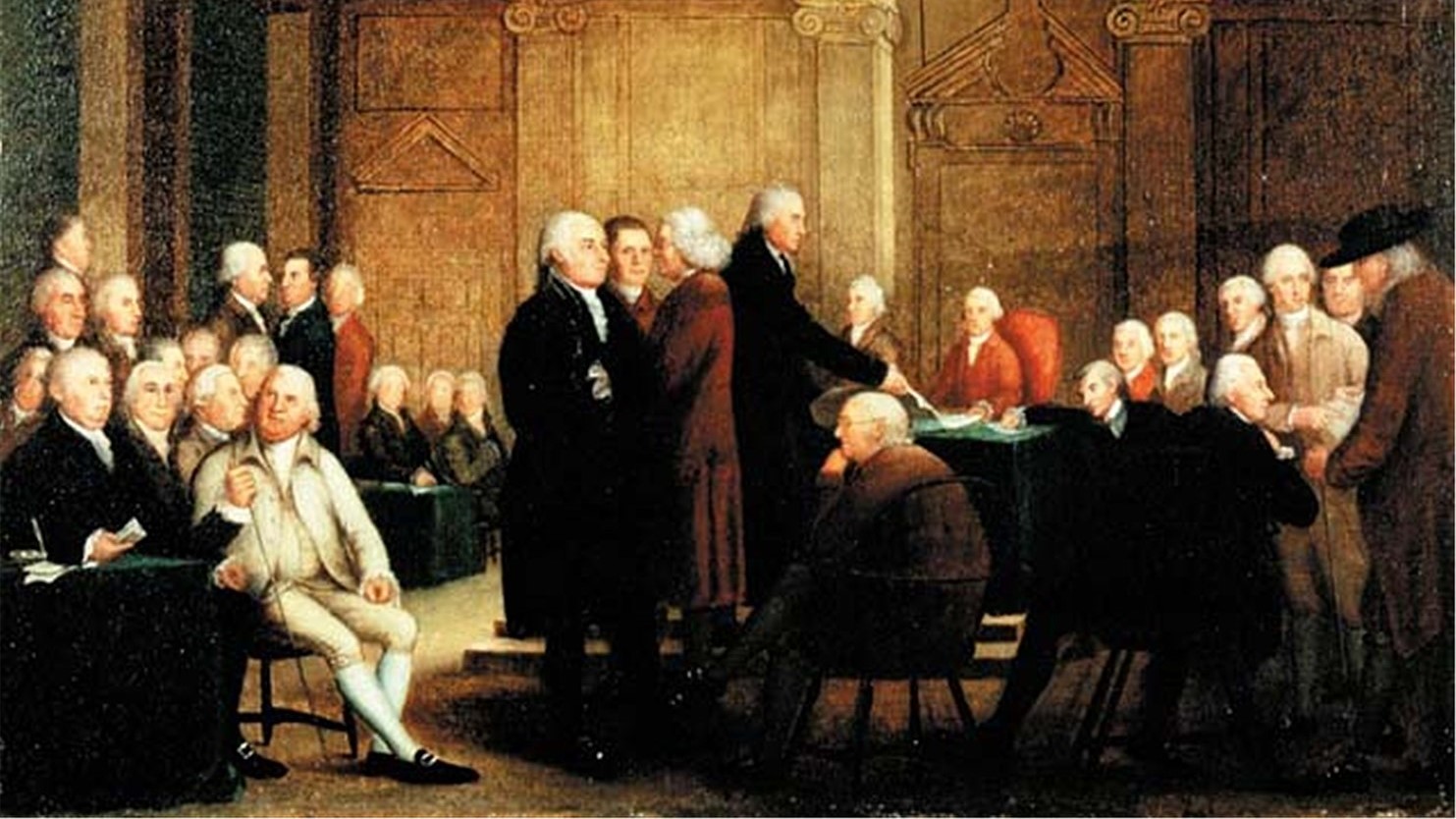January 2011
At dawn of March 19, 1945, the U.S.S. Franklin was steaming toward the home islands of Japan with Vice Admiral Marc Mitscher’s powerfull Task Force 58. The, mission of the vast armada, spread fifty miles across the sea, was to batter the enemy’s home airfields and the remnants of the Imperial Navy in preparation for the invasion of Okinawa. Specifically, the attackers hoped to surprise large numbers of Japan’s latest weapon, the kamikaze, on the ground and destroy them. These suicide planes, introduced about five months before during the Battle for Leyte Gulf, had already damaged several United States carriers, including the Franklin.

Washington had, during 1775, attended the Second Continental Congress as a delegate from what he then regarded as “my country,” Virginia. Virginia was considering a military alliance with the other twelve colonies, but to achieve this was no easy matter. During their long histories the colonies had been jealous of each other, with practically no political connection other than that which was now dissolving: their allegiance to the crown.
The New York Sun for August si, 1835, carried a modest but intriguing item on its second page. It read:
CELESTIAL DISCOVERIES —The Edinburgh Courant says—“We have just learnt from an eminent publisher in this city that Sir John Herschel, at the Cape of Good Hope, has made some astronomical discoveries of the most wonderful description, by means of an immense telescope of an entirely new principle.”
Four days later the Sun printed the first of a series of daily articles reporting the presence of life—vegetable and animal—on the moon.
The Sun , nearly two years old, was the brain child of Benjamin H. Day, a bold young printer who had been casting about for a profitable sideline. With the help of a young printer-writer, George W. Wisner, Day’s Sun was a successful penny sheet in a city of six-penny mercantile newspapers.
To the Editors:
As a postscripts to “The Great Sea Battle” by Peter Padfield in the December, 1968, issue, I believe that the final disposition of the U.S.S. Chesapeake may be of interest to the author.
In Wickham, England, a village near Portsmouth, there is a grain mill called the Chesapeake Mill. It is built from the timbers of the U.S.S. Chesapeake . I noticed the name one day in 1959 while travelling through Wickham, and my curiosity as to why a name of American Indian origin should appear in an old English village caused me to inquire as to its origin from the operators of the mill.
